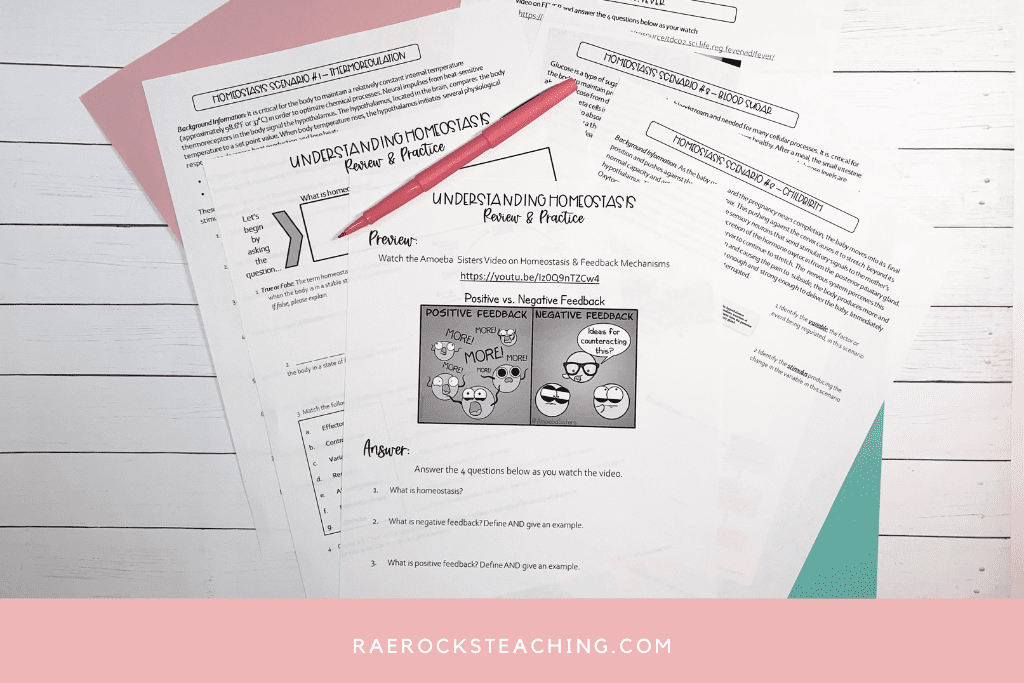In this blog post, you will discover three ways to teach how homeostasis maintains normal body functions.
Looking for more ways to engage your anatomy students? Then check out The Ultimate Guide to Engaging Students to Learn Anatomy | 7 Secrets to Implement Today
Homeostasis Definition Simple
Homeostasis refers to the maintenance of internal equilibrium in the body. It means that our bodies maintain a constant temperature, blood pressure, heart rate, and other vital signs. Our bodies need water to function properly. We lose water through breathing, sweating, urination, and defecation. Water also helps regulate body temperature by absorbing heat and releasing excess heat. Homeostasis is a balance of physiological processes that maintain stability in living things. This can be achieved through a variety of means including regulatory hormones, sweat, and shivering. The body’s internal environment includes temperature, blood sugar levels, cholesterol levels, and many other factors. The balance between these factors is crucial for maintaining health and wellness.

-
Save
The “Homeostatic Balance” Game for Homeostasis Maintenance
To learn more about how our bodies maintain homeostasis, we can play a simple game called the “homeostatic balance” game. In this game, we imagine that there is an invisible box with two compartments inside. One compartment contains water and the other contains air. If we breathe in too much air, then the water will expand and push out the air. This means that we must take in less air than what we exhale. If we breathe in more air than we exhale, then the water will contract and push out the air, causing us to feel dizzy.

-
Save
How Homeostasis Maintains
I typically start off by showing a video clip of the Amoeba Sisters on Homeostasis and having a quick chat before jumping into the content. Then I hand them out some interactive notes that we will complete together as a class discussion. These notes are interactive meaning there are examples built in throughout and we can check them as we go. By doing this, I have found it to be much more effective in their understanding of the concept and the components of the homeostatic mechanisms.

-
Save
Next, I will have them work through different real-life examples. Once I feel they have a solid understanding of the examples, we move on to the Fever component. I have students watch a video on fever and we talk about the purpose of a fever and how it can be a good thing up until a certain point. The students answer a couple of questions that I have them discuss their responses with a partner.
Lastly, I give them an online Homeostasis Activity that demonstrates how homeostasis maintains bodily functions. They must keep an individual alive by adjusting their vital functions. It is a fun and challenging activity, but it really drives home the point that our bodies are ALWAYS working to maintain homeostasis.

-
Save
I hope you have gained a few activities that you can use in your classroom to help you teach homeostasis. It really doesn’t need to be complicated to be effective.
Don’t forget to grab your FREE COPY of The Ultimate Guide to Engage Students To Learn Anatomy | 7 Secrets To Implement Today

-
Save
I love sharing helpful content with y’all and would love to connect on IG or Facebook. I’m on TikTok too! Follow me and send me a DM with what you need more of because I’m here to help! If you are looking for even more inspiration, find me on Pinterest!
Wanna read more?
The Best Skin Disorder Project to Engage Your Anatomy Students
My 5 Favorite Videos of Human Anatomy that Engage Students
Share via:








